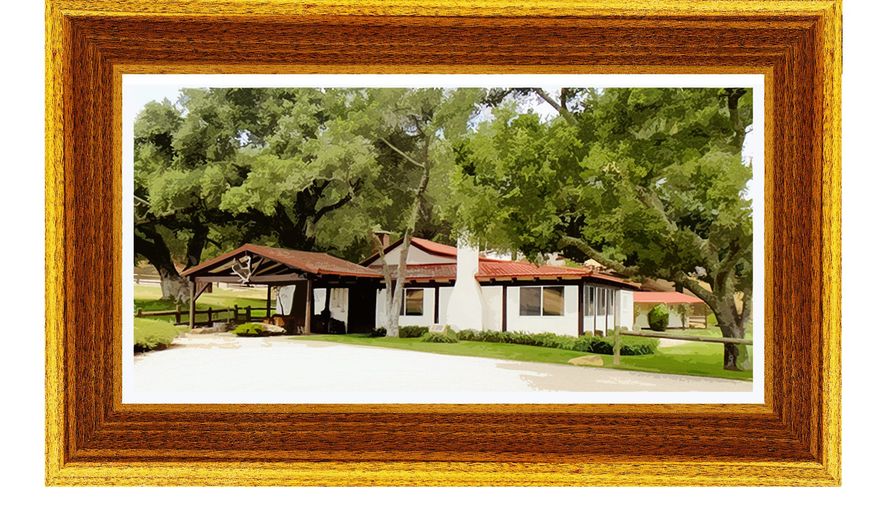OPINION:
Having held Thomas Jefferson’s seat in the House of Delegates, living for two years in a converted shed on Mount Alto-Brown’s Mountain overlooking Monticello, marrying my wife, Susan, nearby at James Monroe’s Ash Lawn, and now living on land that was once a part of George Washington’s Mount Vernon plantation, I have seen how historic properties can be subdivided and developed, thereby altering the experience and sense of a personal understanding of important history.
That’s probably why I loved historian Michael Beschloss’ recent New York Times account of the saving Jefferson’s beloved Monticello.
As a Virginian and an American, I am grateful to the Levy family and subsequent generous benefactors for preserving Monticello to give future generations the ability to experience the intriguing home designed, built and loved by the author the Declaration of Independence, the Virginia Statute for Religious Freedom, and founder of the University of Virginia.
Mount Vernon, like Monticello, was saved not by government, but by private citizens — in the case of Washington’s home the Mount Vernon Ladies’ Association. The Ladies of Mount Vernon always get strong applause when they proudly proclaim that they’ve never taken a dollar of government assistance.
In our time there is another similar salutary effort: President Reagan’s beloved, historic Rancho del Cielo, has been saved and preserved as it was when he spent as much time there as he could. It has not been done by the U.S. National Park Service or a congressional appropriation, but by private citizens who understand its importance to future generations.
This ranch was Ronald Reagan’s home for nearly 25 years — serving as the “Western White House” during eight of those years and those who knew him say it stands as a window into Reagan’s soul.
Just as Monticello and Mount Vernon convey the distinctive personalities of Thomas Jefferson and George Washington, Rancho del Cielo uniquely communicates much about Reagan that could not be readily gleaned from other sources. The very essence of his character is found at the ranch — his humility, his idealism, his diligence and hard work. Since Reagan built much of the ranch himself, The Washington Post called it the “place to see the hand of the man” and “a true national treasure.”
Over the course of his presidency, Reagan spent 349 days at Rancho del Cielo. The ranch is where in 1981 Reagan signed into law the largest tax cut in American history, igniting what would become the Reagan Revolution. World leaders who visited Rancho del Cielo, include Queen Elizabeth II, Lady Margaret Thatcher, Canadian Prime Minister Brian Mulroney and Mikhail Gorbachev.
Jefferson had Monticello, and Reagan had his ranch, places they could go to — as Reagan put it — “think things out.” But in the late 1990s, as his health declined, Nancy Reagan made the difficult decision to sell the ranch. Incredibly, the local, state and federal governments declined to protect this national treasure.
On April 21, 1998, Young America’s Foundation stepped forward to preserve Reagan’s ranch and to pass his ideas on to future generations. Learning from the great efforts of the Thomas Jefferson Foundation and the Mount Vernon Ladies’ Foundation, Young America’s Foundation saved the Reagan ranch and created the fascinating Reagan Ranch Center in Santa Barbara without any government assistance.
Thomas Jefferson said of Monticello, “I am as happy no where else and in no other society, and all my wishes end, where I hope my days will end, at Monticello.”
George Washington said of Mount Vernon, “I can truly say I had rather be at Mount Vernon with a friend or two about me, than to be attended at the Seat of Government by the Officers of State and the Representatives of every Power in Europe.”
Reagan said of Rancho del Cielo, “Riding on one of the tree-lined trails, or gazing up at the western skies, well there’s no better way I know of to sort out a problem … And while I loved living in the White House, I must confess that nothing in this great wide world of ours quite compares to having a home on the ranch.”
The men and women who joined together to save these sites recognize as we must that as free citizens we have a responsibility to protect and preserve these treasured places to inspire and motivate future generations.
• George Allen served the Commonwealth of Virginia as governor, as a member of both bodies of the U.S. Congress, and as a delegate in the Virginia General Assembly. He currently serves as Young America’s Foundation’s Reagan Ranch Presidential Scholar and is a member of the Reagan Ranch Board of Governors.




Please read our comment policy before commenting.